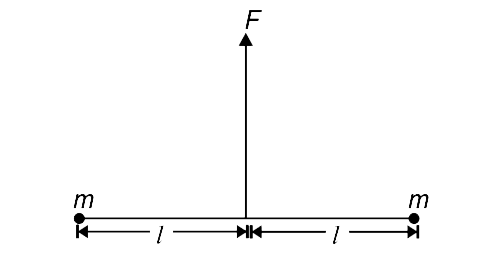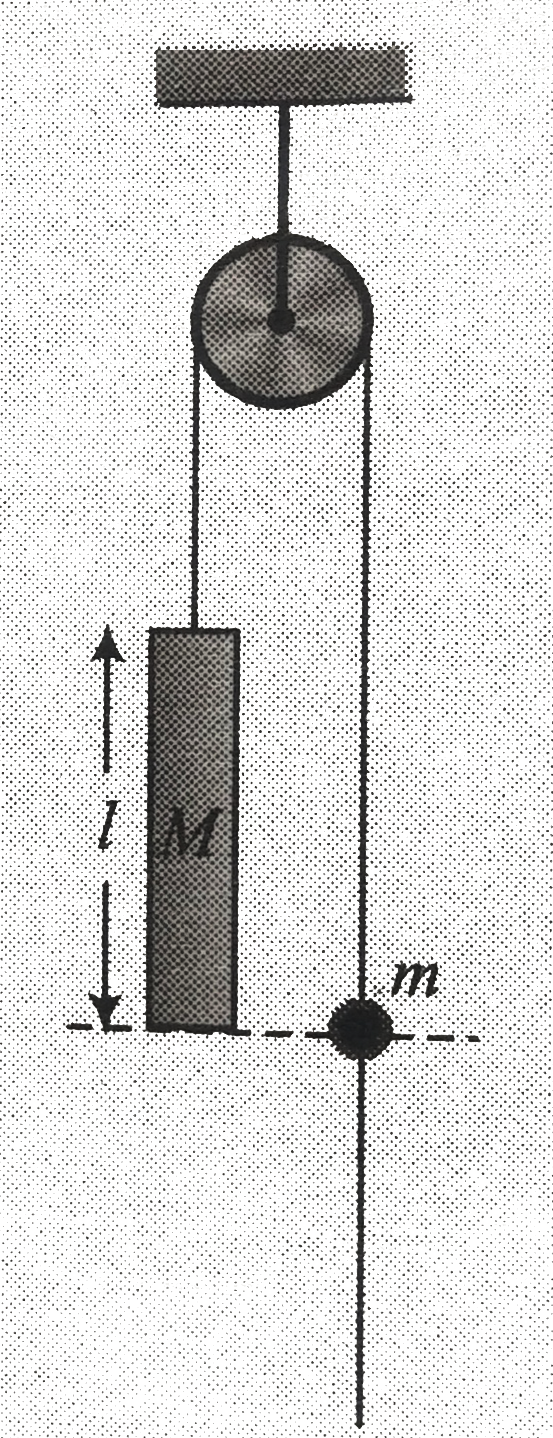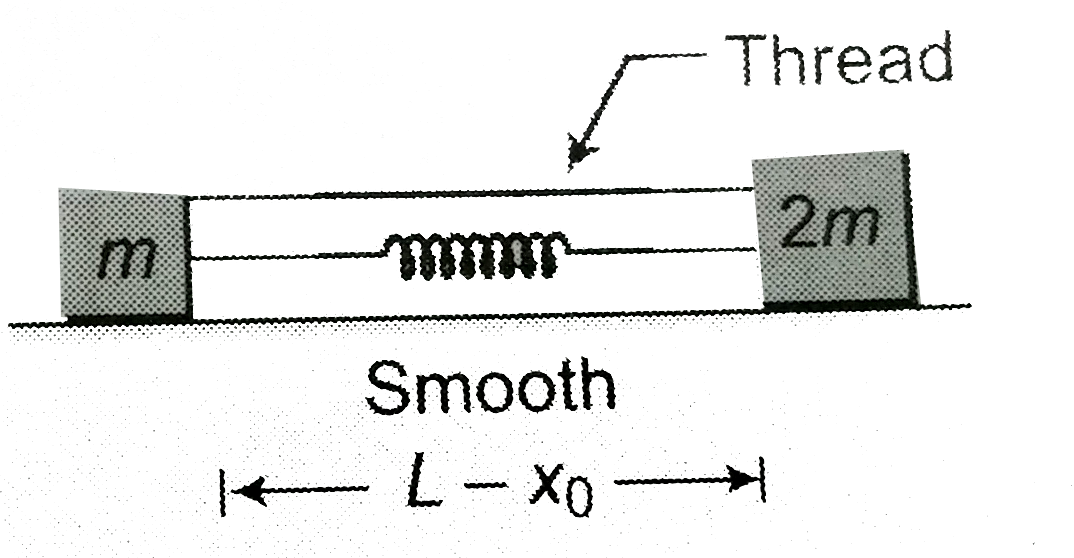Two small motors are kept on a smooth table at a separation L. The motors have mass Mand2M and are connected by a light thread. The motors begin to wrap the thread and thereby move closer to each other. The tension in the thread is maintained constant at F. Find the time after which the two motors will collide. Neglect the dimensions of the motors and their stands.

The correct Answer is:t=√4MN3F
Step by step video, text & image solution for Two small motors are kept on a smooth table at a separation L. The motors have mass M and 2M and are connected by a light thread. The motors begin to wrap the thread and thereby move closer to each other. The tension in the thread is maintained constant at F. Find the time after which the two motors will collide. Neglect the dimensions of the motors and their stands. by Physics experts to help you in doubts & scoring excellent marks in Class 11 exams.
Topper's Solved these Questions
Similar Questions
Two bodies with masses m1 and m2>m1 connected by a thread lie on a smooth table. A force Q is first applied to the larger and then to the smaller of the bodies (Fig.). Is the tension of the thread in both cases the same?
 View Solution
View SolutionTwo cubes of mass m1 and m2 are interconnected by a weightless spring of stiffness k and placed on a smooth horizontal table. Then the cubes are drawn closer to each other and released. Find the frequency of oscillation.
 View Solution
View Solution
Knowledge Check
- Question 1 - Select One
Two bodies with masses m1 and m2(m2>m)connected by a thread lie on a smooth table. A force Q is first applied to the larger mass and then to the smaller mass. The ratio of tensions in the thread in the two cases will be
 Am1m2Bm1m2Cm2m1+m2Dm1m2−m2
Am1m2Bm1m2Cm2m1+m2Dm1m2−m2 - Question 2 - Select One
Three masses M1,M2 and M3 are lying on a frictionless table. The masses are connected by massless threads as shown. The mass M3 is pulled by a constant force F as shown. The tension in the thread between masses M2 and M3 is
 A(M1+M2M1+M2+M3)FB(M2+M3M1+M2+M3)FC(M1+M3M1+M2+M3)FD(M1+M2M1+M2+M3)F
A(M1+M2M1+M2+M3)FB(M2+M3M1+M2+M3)FC(M1+M3M1+M2+M3)FD(M1+M2M1+M2+M3)F
Two weights with masses m1andm2 are suspended from a thread slung over a pulley (Fig.). Find the acceleration of the system a1 the tension of the thread F and the force Fp acting on the pulley's axis. Neglect the mass of the thread and of the pulley and friction.
 View Solution
View SolutionTwo small balls of the same size and of mass m1 and m2(m1>m2) are tied by a thin weightless thread and dropped from a ballon. Determine the tension T of the thread during the flight after the motion of the balls has become steady-state.
View SolutionTwo small balls, each of mass m are placed on a smooth table, connected with a light string of length 2l, as shown in the figure. The midpoint of the string is pulled along y direction by applying a constant force F. Find the relative speed of the two particles when they are about to collide. If the two masses collide and stick to each other, how much kinetic energy is lost.
 View Solution
View SolutionIn the arrangement shown in fig., mass of the rod M exceeds the mass m of the ball. The ball has an opening permitting it to slide along the thread with some friction. The mass of the pulley and the friction in its axle are negligible. At the initial moment, the ball was located opposite the lower end of the rod. When set free, both bodies began moving with constant accelerations. Find the friction force between the ball and the thread if t seconds after the beginning of motion, the ball got opposite to the upper end of the rod. The rod length equals l.
 View Solution
View SolutionTwo blocks of masses m and 2m compress a spring of spring constant k by x0 and blocks are a connected by a thread and placed on a smooth surface as shown. Now , thread is burned. Find the speed of each block when the spring attains its normal length L.
 View Solution
View SolutionTwo identical small balls are interconnected with a light and inextensible thread having length L. The system is on a smooth horizontal table with the thread just taut. Each ball is imparted a velocity v, one towards the other ball and the other in a direction that is perpendicular to the velocity given to the first ball.

(a) After how much time the thread will become taut again?
(b) Calculate the kinetic energy of the system after the string gets taut.View Solution

